Bartosz Luczak/iStock/GettyImages
You shouldn't judge a book by its cover, but you can sometimes judge it by its name, and you can expect just about anything with the name "Texas" in it to be tough. The Texas rattlesnake? Tough. Texas tornadoes? Tough. Texas barbecue? Tough, or at least it starts out that way. That's what you have with Texas broil – an excessively tough cut of beef that becomes tasty when cooked low and slow.
While low-and-slow cooking works for any tough cut of meat, the timing doesn't work for every person, except those with an extra six hours or so to work the smoker. Also known as the clod, Texas broil comes from the cow's shoulder, and it's essentially a large knot of well-worked muscle, sinew and marbling.
The marbling doesn't pose a problem. Choice-grade beef has moderate to moderately high marbling, which melts and lubricates the muscle fibers, contributing greatly to palatability and flavor, especially when you cook the meat quickly. But all that dense muscle and the connective tissue that binds it together don't render tender without slow cooking. So how do you wrangle all that tough Texas beef into something sublime and delectably tender? Cook it to a moderate temperature and cut it down to size, literally.
Temperature Recommendations
You have to cook Texas broil quickly or for several hours – nothing in between. When you cook Texas broil for several hours, the connective tissue melts, creating that "fall-apart" tenderness barbecue connoisseurs strive for. But if you cook broil for just a couple of hours, the connective tissue doesn't render out and you're stuck with a still-tough, leathery cut of beef.
However, if you cook it for around 15 minutes, or to between medium-rare and medium, you get the best of both beefy worlds – delicious marbling melted just enough to coat the meat fibers that haven't cooked long enough to toughen. But you still have that pesky, flaxen connective tissue to deal with, which you can alleviate by ...
Cross-Grain Slicing
Cross-grain slicing, performed after cooking, cuts connective tissue (and tough muscle fibers) down to size. Muscle fibers run the length of the Texas broil. Slicing those fibers crosswise instead of lengthwise breaks them, along with the connective tissue, down into manageable, easy-to-chew pieces.
Prep the meat. Add salt, spice rubs or marinades to the Texas broil 12 to 24 hours before cooking it. To increase tenderness, liberally salt the meat 24 hours before cooking it and store it in the fridge; the salt, a more effective tenderizer than the acid in a marinade, helps denature the protein, which makes it easier to chew.
Cook with high heat. Whatever cooking method you choose, it has to be hot and dry. You can use the oven broiler, the grill or the stove as long as it's screaming hot and you keep the cooking time to around 4 to 5 minutes on each side, or until the meat reaches an internal temperature of 135F.
Rest and slice. After cooking the Texas broil, cover it loosely with aluminum foil and set it aside for 5 to 10 minutes. During its rest, the temperature will rise to about 140F. Next, slice the meat across the grain into 1/2-inch slices. If you cooked the broil in a pan, deglaze it; add 1 cup of stock and thicken it with 1 tablespoon each flour and butter for a complementary sauce.
Related Articles

How to Smoke Elk Meat

What Is a Chateau Cut?
The Best Way to Cook Moist Tri Tip
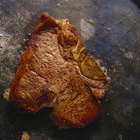
How to Cook Select Grade Beef Steak
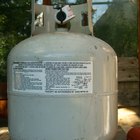
How to Barbeque a Brisket on a Gas Grill

How to Grill a Boneless Leg of Lamb ...

How to Cook a Large Amount of Corned ...
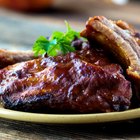
How to Make the Most Tender Spare Ribs
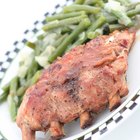
How to BBQ Ribs on a Smoker
How to Cook Beef Chuck Underblade

How to Grill London Broil

How to Cook Beef Shoulder Muscle

How to Slow-Cook Meat in the Oven

How to Tenderize Beef for Country Fried ...

How to Cook Texas Broil Roast
Easy Ways to Cook London Broil Steak in ...

How Long to Cook Steak at 150 Degrees ...
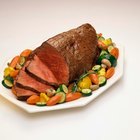
Tri Tip Cooking Methods
Can You Slow-Cook a Brined Pork?

The Best Way to Prepare Bison Sirloin
References
Resources
Writer Bio
A.J. Andrews' work has appeared in Food and Wine, Fricote and "BBC Good Food." He lives in Europe where he bakes with wild yeast, milks goats for cheese and prepares for the Court of Master Sommeliers level II exam. Andrews received formal training at Le Cordon Bleu.